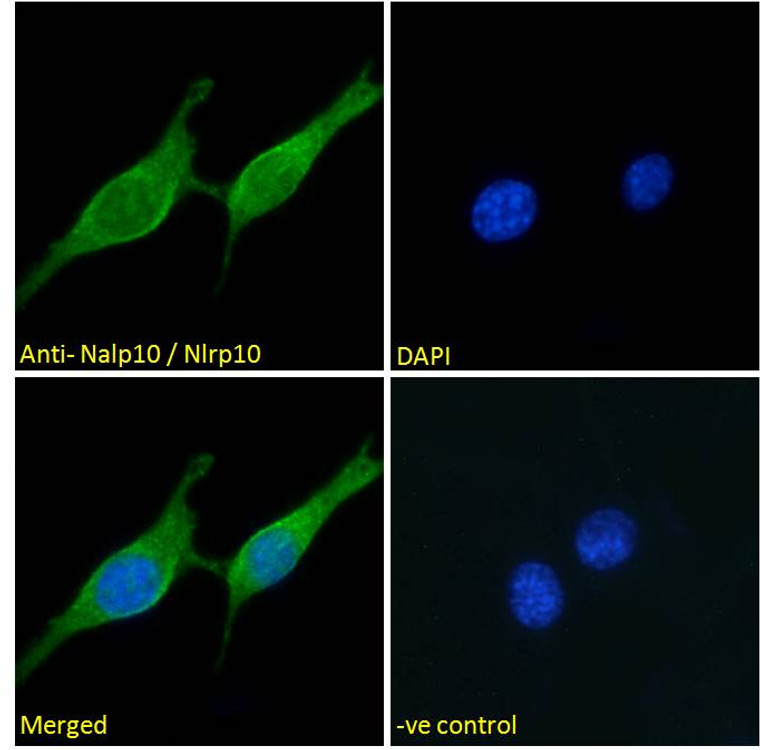| Host: |
Goat |
| Applications: |
Pep-ELISA/IF/FC |
| Reactivity: |
Mouse/Rat |
| Note: |
STRICTLY FOR FURTHER SCIENTIFIC RESEARCH USE ONLY (RUO). MUST NOT TO BE USED IN DIAGNOSTIC OR THERAPEUTIC APPLICATIONS. |
| Short Description: |
Goat polyclonal antibody anti-Nalp10/Nlrp10-Mouse (N-Term) is suitable for use in ELISA, Immunofluorescence and Flow Cytometry research applications. |
| Clonality: |
Polyclonal |
| Conjugation: |
Unconjugated |
| Isotype: |
IgG |
| Formulation: |
0.5 mg/ml in Tris saline, 0.02% sodium azide, pH7.3 with 0.5% bovine serum albumin. NA |
| Purification: |
Purified from goat serum by ammonium sulphate precipitation followed by antigen affinity chromatography using the immunizing peptide. |
| Concentration: |
0.5 mg/mL |
| Dilution Range: |
IF-Strong expression of the protein seen in the cytoplasm of NIH3T3 cells. 10µg/mlELISA-antibody detection limit dilution 1:128000. |
| Storage Instruction: |
Store at-20°C on receipt and minimise freeze-thaw cycles. |
| Immunogen Region: |
N-Term |
| Accession Number: |
NP_780741.1 |
| Immunogen Sequence: |
NDLEENSFKTLKFH |
| Function | Inhibits autoprocessing of CASP1, CASP1-dependent IL1B secretion, PYCARD aggregation and PYCARD-mediated apoptosis but not apoptosis induced by FAS or BID. Displays anti-inflammatory activity. Required for immunity against C.albicans infection. Involved in the innate immune response by contributing to proinflammatory cytokine release in response to invasive bacterial infection. Contributes to T-cell-mediated inflammatory responses in the skin. Plays a role in protection against periodontitis through its involvement in induction of IL1A via ERK activation in oral epithelial cells infected with periodontal pathogens. Exhibits both ATPase and GTPase activities. |
| Protein Name | Nacht - Lrr And Pyd Domains-Containing Protein 10 |
| Cellular Localisation | CytoplasmCell MembranePeripheral Membrane ProteinCytoplasmic Protein Which Is Recruited To The Cell Membrane By Nod1 Following Invasive Bacterial Infection |
| Alternative Antibody Names | Anti-Nacht - Lrr And Pyd Domains-Containing Protein 10 antibodyAnti-Nlrp10 antibodyAnti-Nalp10 antibodyAnti-Pynod antibody |
Information sourced from Uniprot.org
12 months for antibodies. 6 months for ELISA Kits. Please see website T&Cs for further guidance






